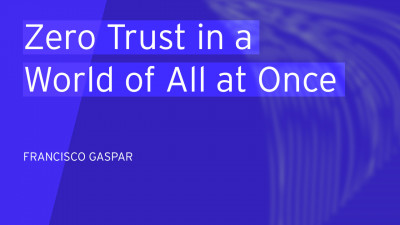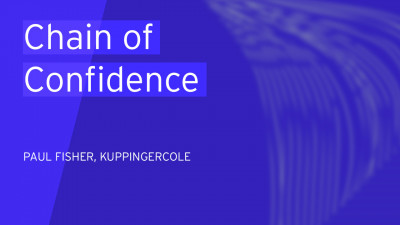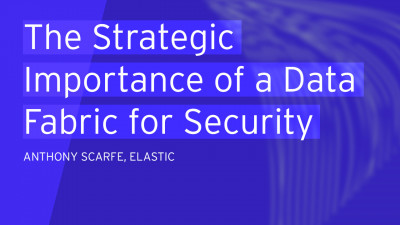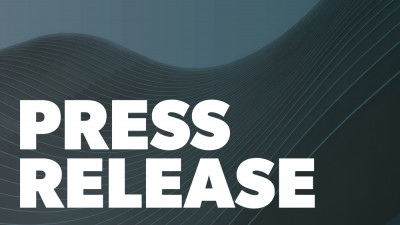Thanks for joining us here in Seattle this morning, we'll have an hour here with Chris dun go, who you saw, hopefully earlier this morning, leading off with the why of the customer journey. He has a specialty of behavioral economics. So which is very germane, I think, to authentication. And then we'll have a panel after that with a few folks in the room, Bob west and Ryan Fox and Alexei, Phillip blunt, who will be here shortly I assume. And we'll have our panel. And without further ado, I'll turn this over to Christina. Yeah.
Thank you.
And this only should take 20 minutes, so it should be more discussion on the panel, but it's
A small room. The sort of in the discussion,
See that is a painful, by the way.
That's why I live. Not really. I wish I was. Can everybody hear me in the back as well? Perfect. The why behind consumers journey.
We, we had a lot of requests in the last couple of months by our clients to help them explain their customer journey, which in, in and of itself is rather complicated. And I would like for all of you to put you in a shoe as who you are a consumer, okay, there were some studies out here we go talking to executives and roughly 80% strongly agree that delivering superior experience is important for the organization's success. How many of you are working in organization that is customer facing? I think you guys will all agree, right? That's like the number one thing.
And a lot of tools marketing tech has been developed to you, the interfaces, you, the experiences and so on. So forth. Interesting enough, the same executives, only 34, 34 beliefs that the organization are equipped to deliver such superior experience. And furthermore, interesting. Actually it's not surprised. And actually just 70% in the us companies were really good when it came to customer experience. And last year, just 1% were viewed as excellent. 1% of companies in us deliver superior experience.
Well, why is that? Well, I think, and you guys all know better than I do within our organization. It's utterly complex to create a unison in putting the customer first, right? Because it's all about what my KPIs, who is actually my customer, cuz my customer is not the consumer. My customer is my department X department Y and so on and so forth. So it creates a lot of clutter and complexity to deliver true customer experience. It becomes even more complex when the customer journey for us.
It's not just that simple that if you say I have what you need, please come to me and I'm coming over here because that's not how long it works because how it really works is as I mentioned earlier, we are primed to, with the internet to create more information, to get everything we need to satisfy our expectation of what we want to get.
Right. And I will give you a brief example and get a more detail of how this actually works in human minds and what companies could do to intercept those experiences as they go along the way. Okay.
Going back to the banking example, because I think we are kind of in this mode already. This is Jennifer, by the way, Jennifer, here we go. Thank you. Appreciate that, Jennifer. Awesome. Move to Seattle. She loves Seattle. She loves the rain and she also likes to find a new bank. Her last bank was commerce bank, rather cumbersome, rather complicated, painful, so to speak. They actually just changed her website after 10 years. So as you can see, she's ready to switch and what she's doing, as we mentioned earlier, she uses these seven elements to define which bank she's choosing. Right?
So let's, they're they rumbling in her mind and she has expectation about each. And as I mentioned earlier, she uses them in a different way. Right. To see which of these banks she's trying to find for filler utility expectation. And how many of you have read the book thinking slow and fast thinking fast and stuff. Okay.
Very, very interesting book. He talks about that there's system one thinking and system two thinking right system one.
Hecla, it's very emotional, very quick. Like if I see something about it connects with me system two, it's rather slow. It's very rational. Okay. Do not kill me. But we actually do both. And we do both because sometimes we aware of it in sometimes we are unaware of it. It's just how our brain operates. And I'll bring operates by finding signals in the environment because the world is so complex that we try to cluster out the information that is only important to us, right? So we walk around with some, some need in order to satisfy the need. We cluster out all the information.
That's irrelevant to get what we need primarily before we go into a further complex thought processes, which will take more time. It's more complicated and will create more effort on our part.
Right? So recruitment was right as a system, one thing, and it's quite emotionally quick, but that's just the primary drive in our decision process. That one need that we are looking for and that's different for people, right? And not only do we do that, we also mobilely experience. It's not a binary function. It's not a yes or no is zero one. It's actually heuristic that we are using.
It's defined for us and heuristic. I don't how familiar that heuristics are. The rule of thumbs, how we define mobile online experience. And in Jennifer First's case mobile online experience, it's not just, it has to have a nice interface. It also has to it's assume a specific privacy component. It has to be secure. It should be able to be breached. And it also should be able to take a picture of my check without me plug in all the numbers and all these things over that's her primary function.
What she does.
She goes out to find a bank that can fulfill her primary need because she doesn't wanna go through all these other things first. So what she does, which we all do, and we look for something new, we Google and she's like, okay, which of all these banks available gives me a good customer, mobile online experience, which is privacy and so on and so forth. And she finds a few sides. And then she goes on peer review. She thinks about it. She reads them all with one thing in mind that mobile online experience privacy in her hat.
And she sift through all the information about, and what we do is actually just scans it. She doesn't reads all of it. She just scans it. She leaves that side and she goes to the bus because she's late for work. And on the bus station, she sees an ad.
She's like, oh, okay, there's a new privacy thing from bank a and I that's interesting. So she checks it out. Her phone goes in, reads about it. It's not blue. And she Googles again, her mobile phone at work. You now she has kind of has a brief moment where she actually, what website look at that bank and see if it really true.
What does it offer? How much is the prices, but she can't really find it. So she has to go through the three third, fifth page on this side to actually find what she's looking for even. So it was promoted on the website.
She also does some peer review. She comes home. She's like, Hey, I've heard about this bank. Can you tell me about it? All in her mind is about mobile Analyst experience, right? Her friends talk about her and she's like, okay, I will check it out and we'll go to the bank and see what's going on. And eventually she's like, I will sign up, but you know what she's doing now?
She actually said, okay, now this bank is satisfying. My primary driver now let's see, is it also satisfied all the other elements in our decision process, at least on par is what I'm expecting. Right? What we have found is not only the primary, but also the secondary and the third is more relevant than the rest. Okay. What she does is she picks the bank and she picks the bank. It's a mobile online bank only.
And it's a made up brand because it doesn't exist in America, but it lives in, Europe's only mobile online bank that exists currently.
Monso and I was fortunate enough to speak with the co one day. And we sat on the panel together. And what he did is he said, you know what?
We, we looked at the consumer and we wanted to satisfy what they're really looking for. Right? So they created that product. Interesting. Also that that whole path, that whole journey took her like 19 days to pick and be satisfied what she's looking for. And if I go back to Jennifer and her experience, going back to Kuman assumption that we thinking fast and slow, yeah. We go out there to fill our primary driver. And if a bank or product's not fulfilling this, they're out of the running. So bank of America doesn't have the move on experience. I'm looking for.
They're already out, no matter how good they are in credit card and service over and fees and ATM location. I don't care if you don't do give me what I need. I'm done. So now think about, I think Tim made a good point earlier today.
Kuman says emotional first impression. And then we go into rational. We know that first primary drive for emotional. And then the rational. What happens also is that along the way, thinking about Tim's services offers, let's say in service offer this particular bank also offers privacy protection, right?
And even so we living in a world where everything looks similar, right? Everybody, the same, all experience and so on, so forth and I need to differentiate. So what she does, she starts to differentiate, okay. If I can't differentiate the primary or secondary driver, the third driver certainly will help me to differentiate. And that's why privacy so many might claim not relevant today will become extremely relevant. After all the breaches we have seen.
And I might not be a Messiah saying, Hey, by the way, if Facebook at breach and all your data is stolen, every person in the room will think about privacy.
And we'll look at this in more relevancy and so on. So knowing that this is very complex part of the journey, and it's really hard to engage what we tell our clients, what can you do while you should be everywhere, right? With the right message at the right time, the right conversation pieces, which is ideally complex. Where do you start?
Since we know you can't really differentiate people by demographics, psychographics to identify how they think, what we encourage our clients to do is in order to create utility and taking along path, imagine you would actually know what people are looking for and you could differentiate what these consumer segments are looking for. So you can play it up to them, right? We already so sophisticated that if somebody puts in, in a Google search, I'm looking for X, you get something, right.
Well, what if you can personalize it since it's relevant to them?
So if they look for most private mobile online bank, what you could be most certain thing that this person's primary need is that, so why wouldn't you play out something like that? And since your API's already connected with Google, when they're looking for peer review, you should have the ability to play out the peer reviews that you want them to see to push towards you.
And the next phase it's like, well, if I have an outside outdoor ad that is connected to something, why do I have to sift through my website to get on the fifth page of what I want? Why not the first page? Because I was just there because you know where I am. So in order to create customer experience, that is relevant today in today's marketplace, because we are short, lived in our mind because we want to get to what we want very quickly companies today have to be more customer-centric and standing what is really needed and wanted instead of just paying up.
Here's what we have now buy it.
Right? So understand CustomerCentric understand what really drives you to what really drives value usefulness, because that creates a personal connection. That's like, if you deliver all, I want I'm all with you. And then redefine the customer note by who they are, but how they think, you know, understand what leads them to that decision process. And last but not least, you know, address specific needs, if you can address specific needs, the likelihood of them actually communicating engagement is extremely high. We have seen this with a lot of tests that we have done.
If we understand just the primary drive and play back a very simplistic message. We did this as a grocery store might not be relevant here, but we said, well, we know that you price discount shop and a budget shopper and organic shopper. And we said, we built a store on your neighborhood that delivers price, discounts, budget, and so on.
And we say, well, if I know who you are and I connect you with my message, then I assume you will connect with me. And to 86%, we were right, just playing back their primary need. I'm not even going further downstream, just their primary need.
So despite who they were from a demographic lifestyle, psychographic perspective, it's less relevant to actually delivering utility to the consumer. And that's what we are trying to convince all of our clients. If you think about privacy, having all the instruments, right of identity, what is really needed from an identity standpoint, do I need to weigh, do I need a fingerprint? Do I need face a recognition? What is relevant to the consumer to feel safe and feel trusted? So with that being said about being for question since then asking me to talk less to, yes, go ahead.
So I love the framework, right? I'm wondering when you actually go to implement this framework, how much of your processes qualitative and how much is quantitative? How do you think about the qualitative quantitative elements? Right. Because when you talk, I kind of hear this kind of jobs to be done framework and a lot of ethnographic research and like these very deep interviews, you know, kind of uncovering what the psychological motivations are for these people.
But like, I don't think anybody in this room lives in that world and we all live in the world with systems and data. Sure.
I mean, you guys tell me if I'm wrong.
Yeah, yeah, yeah.
Good, good point. So what, what we do is qualitative quantitative, number one, qualitative, we design something that is unbiased.
It's, A's a procedure because human beings, aren't capable of telling me why. If I ask you, I love your coat, by the way, it's really, really great. Why did you buy it? You will give me a justified answer. Outfits very well, like color. I love it. But in internally, like I don't really like it, but it was a code that was just hanging there and it was clean and I don't, I feel comfortable, whatever it will do. So we design something that allows us to get to these elements. Right. We design something that allows us to see how these elements are used. Okay. Qualitatively and quantitatively.
We use that same information on the universe. We're trying to study. Okay. And understand, okay, here's now the base. How the world outside makes the decision.
Well, since you have all the data and we have all the data, now we try to match them with use, right? Because then we can see with the likelihood of that person thinking extremely high it's X, what we have found.
However, and that's why it becomes complicated with the data that you have valuable is that you have, might be all the information and pieces of what they buy, where they buy, how they buy.
What we found is might be just socioeconomic differences between these decision types, right? People like Jen, things like that. People like Emma think LA, how are they different? The data set that we can see with extreme likelihood or predictability who they are and would they make the same decisions, right.
It really depends on how strong and how big your data set is and how complex that we can match them up. And it's how we create that predictability today as well. Really depends what is available. Right.
Good, good question. But the front piece is really qualitative, quantitative to get to the deep insights. And then we would just match back to create a complexity of the market. Good question. Sure.
Tons more questions. But you guys jump in. So maybe on a scale of one to 10 for when you worked with identity teams in different organizations, like what's the average level of quality of their data,
One till 10,
Were they acquired, you know, it gets more complex. Are they matching the data or not?
So, you know, there's Tim and there's Tim G and it's Tim, Tim Goman. And they're all the same people, but they're all different data sets. So gets really complex. I'll give him a five, what we need. And what'll be saying is like, what data do you have are valuable, right? What do you have? What can truly say is identifying Tim? And then let's see if we can match Tim. Right. It really depends. We work with watching 10 to entrepreneurs. It really doesn't matter. Just a matter of how good are your data and what do you need to match them? That's a really good, really good question.
Then
I have, I have one for you and maybe it's a good transition to the next panel on authentication. And that is just how much does a bad user experience during some kind of authentication process, whether it's login or the asked to login again, or registration or password, how much do those things cost enterprises online, differentiate between high market share and market share.
Yeah.
Good, good question. I don't have the answer on the, the percentage of how much they will lose because we haven't done this, but I can tell you. Okay. So since we talk about be we can measure PE, right?
It's like, how do you measure utility? Right? And if you set aside with something, switching over to something creates effort, right?
And we have this measurement allows you to say, okay, let's say the product I have on my hand here, iPhone seven and the iPhone X comes out today. We're all excited about it. Everybody wants to buy it a thousand bucks.
How much, how much do I think it will fulfill my expectation? Right? And if it's about a 30 point unit points, I'm going to switch. Okay. So let's say I, I commit to switch. I'm committed to buy something. I'm going to identify myself and go through this whole rigor. More of going through these steps. The longer the steps are, the more time and effort I have to put in, depending on how much I want it, the way I go through it. But if my willingness to say, it's not okay, it's I want it, but how much German? It's not that I'm dropping off.
So it's really how much utility are you going to provide to me? Then I have go through 10 steps. If the utility can get somewhere else quicker and faster, I will do that.
So that's, it's a huge, the more effort we have to exude into doing something the less we willing to go, unless it's a high end results that I'm really expecting to get. And if I don't get this in the end, let's say I'm actually going through the steps and I don't get all the things I want. I'm devaluing actually what I'm getting. And that's a big issue.
Another, another interesting point about this is that you referred to the switching cost in the inertia. People don't like to have to learn a new way of logging in array of interacting with the service and get their, they like to. So when somebody's a new customer and they don't have any learned experience and investment that you're offering, then it's probably important to give them things like pro progressive profiling.
So it's really easy for them to onboard, but once they're onboard, they can tolerate a certain amount of switching of the user interface of whatever, because otherwise they would have to change bank. So, so you do have a certain amount of wind back from the inertia. They're switching as low, worried about this whole time.
That's true. Yeah. And it's well, even, so the switching, if the switching is higher, the switching cost, you talked about, if I'm not getting what I want, I'm going to switch because what keeps me to open another bank account somewhere else and just move everything over.
We did a millennial millennial study. You know's roughly 30% of millennials switch in the next six months. And they don't care. They don't care because, oh, I have a bank card with chase. I have a bank for, for Fargo. And I'm another bank card because I don't care. I can just put my money wherever I want. And where do I really need to? Because I've been here. And then I PayPal, I don't really care. So for them, it's like switching costs, identifying if I can go and somebody's offering me something equal, even. So I have to log in again, but it's better. I will do it.
So it really depends on what you get from what you're going to, and then the login process, as you said, you know, what makes it easier and safe. But I think it will come to a point where people say, what keeps me safe? What keeps my data private, whatever it is. I don't have the answer for that for all means. But I think that's a question customer-centric you guys should ask yourself as you create what is next in that world. So I think I'm over time.
No, you're good. You're good. Any one last
Questions. Thank you. Appreciate it.
















































